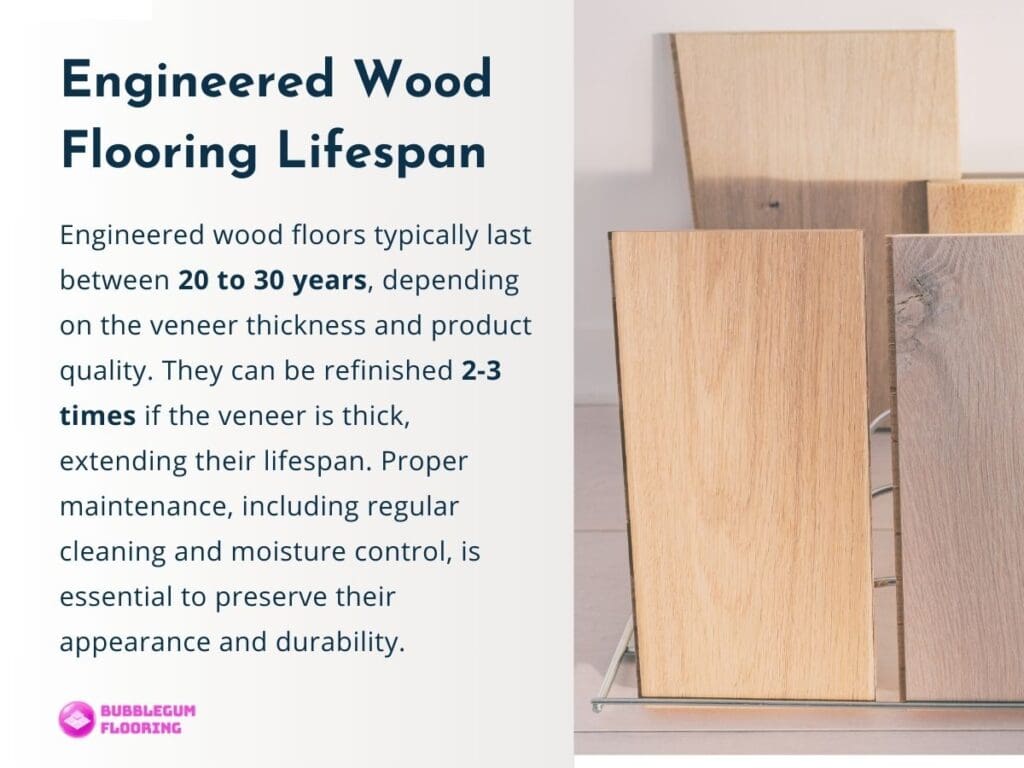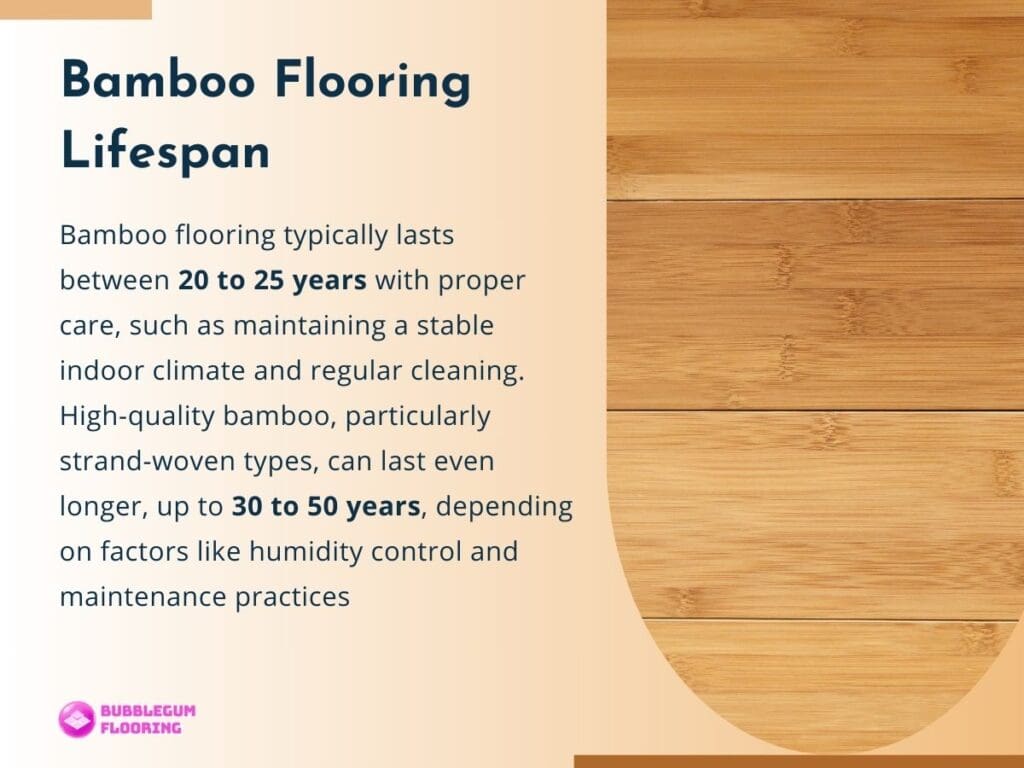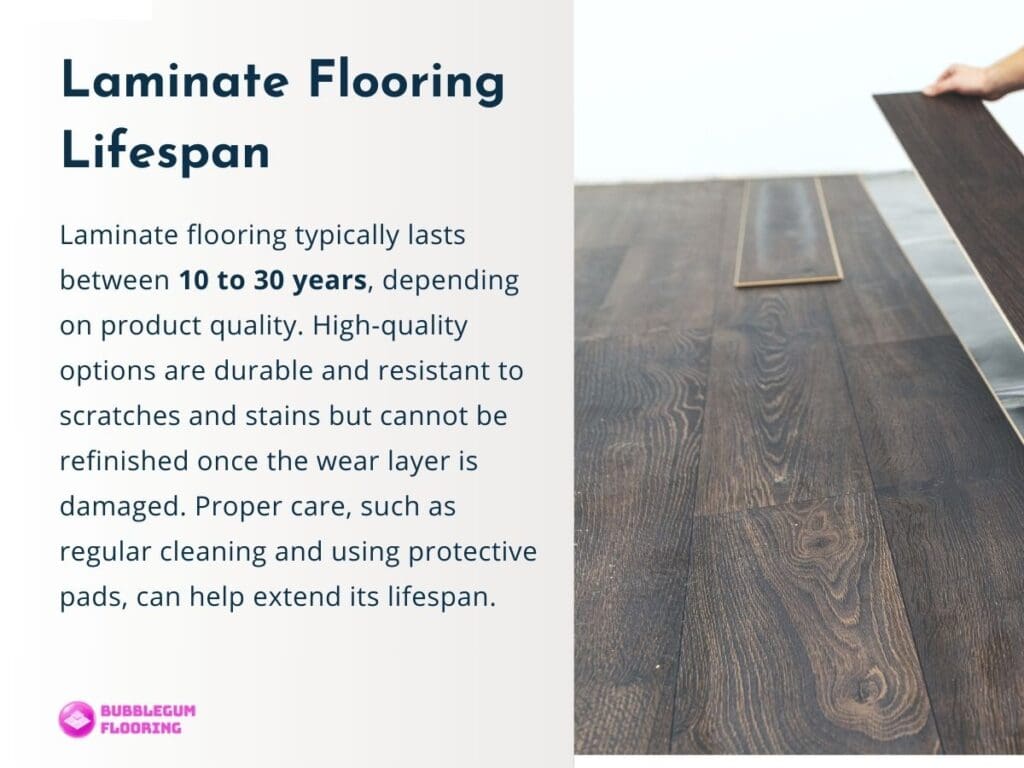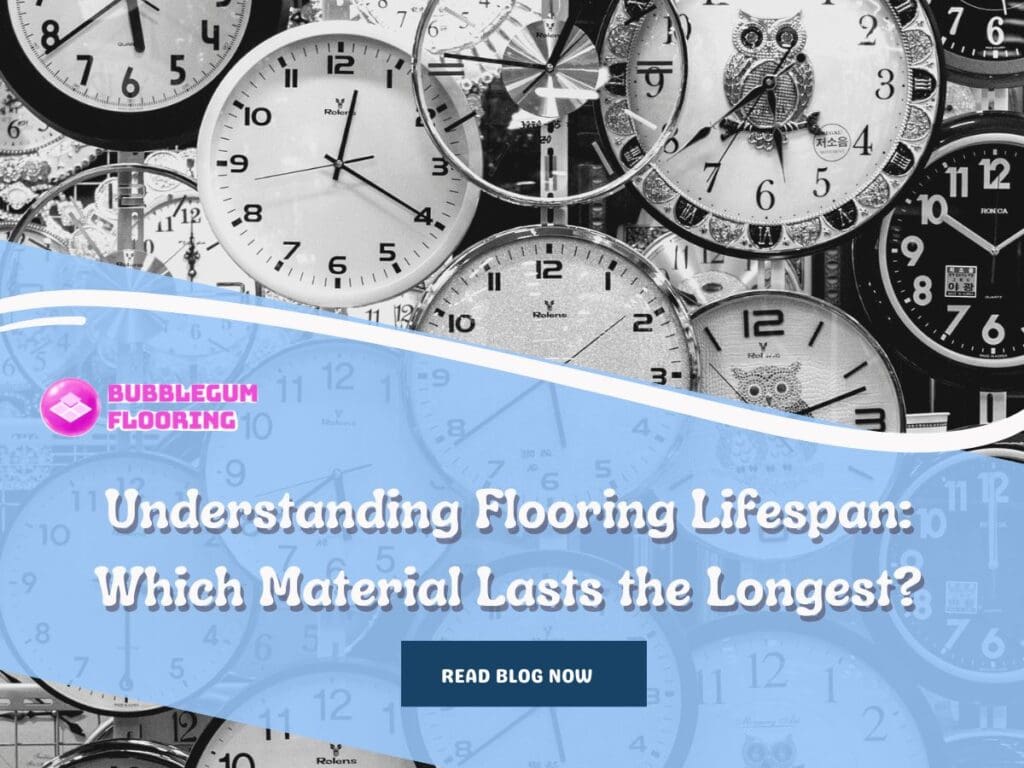Choosing the right flooring for your home is more than just a design decision; it’s an investment in durability and longevity. Different flooring materials offer varying lifespans, from the enduring elegance of travertine tiles to the cozy comfort of carpet.
Understanding the lifespan of each material—tile, concrete, and carpet—can help you make an informed choice that aligns with your lifestyle, budget, and aesthetic preferences. This guide will help you in understanding flooring lifespan, giving you the insight needed to select a floor that will stand the test of time.
Hardwood Floors
Hardwood floors are often regarded as the gold standard in flooring. They bring a timeless, natural beauty to any room and have the potential to last for over a century with proper care. The key to the longevity of hardwood floors lies in their ability to be refinished.
Every 7-10 years, hardwood floors can be sanded down and refinished, removing surface scratches, dents, and wear while restoring their original luster. This process can be repeated multiple times over the floor’s lifespan, making hardwood a sustainable and long-lasting choice.
However, the type of wood, the environment, and the maintenance routine all play significant roles in determining how long your hardwood floors will last. Oak, maple, and cherry are some of the most durable species, while softer woods like pine may require more frequent refinishing. Regular cleaning and using area rugs in high-traffic areas can also help extend the life of your hardwood floors.
One of the few drawbacks of hardwood is its sensitivity to moisture. Excessive humidity or water exposure can cause warping or cupping, so it’s essential to control the indoor climate and clean up spills immediately. Despite this, with the right care, hardwood floors can be a lifelong investment that adds significant value to your home.
Engineered Wood Floors
Engineered wood floors offer a more affordable alternative to solid hardwood while still providing the look and feel of natural wood. Composed of a thin layer of hardwood veneer on top of a plywood or high-density fiberboard core, engineered wood is designed to be more stable than solid wood, making it less prone to warping due to changes in humidity.

The lifespan of engineered wood floors typically ranges from 20 to 30 years, depending on the thickness of the top veneer layer and the quality of the product. While engineered wood can be refinished like solid hardwood, the number of times it can be sanded down is limited by the thickness of the veneer. Thicker veneers can be refinished 2-3 times, extending the floor’s lifespan, while thinner veneers may only withstand one refinishing.
Maintenance for engineered wood is similar to that of hardwood floors—regular sweeping, mopping with a damp cloth, and avoiding harsh chemicals will keep the surface looking new. Engineered wood’s resistance to moisture makes it suitable for areas like basements and bathrooms, where solid hardwood may not be ideal. However, it’s still essential to control moisture levels to prevent damage over time.
Bamboo Floors
Bamboo flooring is an increasingly popular choice for eco-conscious homeowners. As a fast-growing grass, bamboo is a renewable resource, making it a sustainable flooring option. When it comes to lifespan, bamboo floors typically last between 15 and 20 years, although high-quality bamboo can last even longer with proper care.

Bamboo’s hardness varies depending on the manufacturing process. Strand-woven bamboo is the hardest and most durable type, making it more resistant to scratches and dents. Regular bamboo, while still durable, is softer and more prone to wear. Like hardwood, bamboo can be refinished, but the number of times depends on the thickness of the bamboo layer.
To maximize the lifespan of bamboo floors, it’s important to maintain a consistent indoor climate, as bamboo is susceptible to changes in humidity. Regular cleaning with a microfiber mop and gentle cleaners will help preserve the finish. While bamboo is relatively moisture-resistant, it’s best to avoid installing it in areas prone to excessive moisture, such as bathrooms.
Laminate Flooring
Laminate flooring is a budget-friendly option that offers the look of wood, stone, or tile without the high price tag. It’s composed of a high-density fiberboard core with a photographic layer that mimics the appearance of natural materials, topped with a protective wear layer. The lifespan of laminate flooring can vary widely, ranging from 10 to 30 years, depending on the quality of the product.

High-quality laminate flooring is durable and resistant to scratches, stains, and fading, making it a suitable choice for high-traffic areas. However, once the wear layer is damaged, the laminate cannot be refinished, and the floor will need to be replaced. Proper care, including regular sweeping and using protective pads under furniture, can help extend the life of your laminate floors.
One of the benefits of laminate flooring is its resistance to moisture, making it a good option for kitchens, entryways, and other areas where spills are common. However, standing water should be avoided, as it can cause the fiberboard core to swell and warp. Overall, laminate flooring offers a cost-effective and durable solution for homeowners looking for a wood-look floor with minimal maintenance.
Luxury Vinyl Flooring
Luxury vinyl flooring (LVF) has gained popularity in recent years due to its durability, versatility, and affordability. Available in planks or tiles, luxury vinyl can mimic the look of wood, stone, or ceramic while offering enhanced moisture resistance. The lifespan of luxury vinyl flooring typically ranges from 10 to 20 years, depending on the quality of the product and the level of foot traffic.
Luxury vinyl is composed of multiple layers, including a protective wear layer, a printed design layer, and a resilient core. The thickness of the wear layer is a key factor in determining the floor’s durability—thicker wear layers provide better protection against scratches, dents, and stains. Unlike laminate, luxury vinyl is completely waterproof, making it an excellent choice for bathrooms, kitchens, and basements.
Maintenance for luxury vinyl flooring is simple and straightforward. Regular sweeping and mopping with a damp cloth will keep the floors looking clean, and the wear layer ensures that the surface remains intact even in high-traffic areas. While luxury vinyl may not have the same lifespan as hardwood or engineered wood, its cost-effectiveness and ease of maintenance make it a popular choice for many homeowners.
Tile Flooring
Tile flooring is a popular choice for many homeowners due to its durability, versatility, and wide range of aesthetic options. Tiles are available in various materials, including natural stone, glass, ceramic, and porcelain, each with its own unique characteristics and lifespan.
- Travertine Stone Tiles Travertine is a natural stone known for its timeless appeal and durability, capable of lasting over 100 years with proper care. Its strength and density make it highly resistant to wear, but regular sealing is necessary to protect against stains and moisture damage. Ideal for both indoor and outdoor use, travertine’s natural slip resistance and temperature tolerance make it a versatile choice.
- Glass Tiles Glass tiles offer a sleek, modern aesthetic, often used in bathrooms and kitchens. However, they are more susceptible to scratches and chips, especially in high-traffic areas, and have a lifespan of about 10 years. Careful placement and quality installation can extend their life, making them a stylish option for decorative accents.
- Ceramic Tiles Ceramic tiles are popular for their affordability, durability, and ease of maintenance. Made from baked clay, they can last for decades with proper care. However, they are prone to chipping, particularly in high-use areas, and replacing individual tiles can be challenging if they are no longer available.
- High-Quality Porcelain Tiles Porcelain tiles, a type of ceramic, are denser, harder, and more water-resistant. They are less prone to chipping and cracking, making them ideal for high-traffic and commercial areas. With a lifespan of up to 50 years and minimal maintenance needs, porcelain tiles offer excellent durability and value.
Concrete Flooring
Concrete flooring has gained popularity in recent years for its industrial look, versatility, and durability. Whether polished, stained, or left in its natural state, concrete floors can last anywhere from 30 to 100 years, depending on the quality of the installation and the level of maintenance.
Concrete is one of the most durable flooring options available. It’s resistant to scratches, dents, and moisture, making it suitable for both residential and commercial applications. However, concrete is not without its challenges. Over time, it can develop cracks due to settling or temperature fluctuations. While small cracks can be repaired, larger ones may require more extensive work, potentially shortening the floor’s lifespan.
To maximize the lifespan of concrete flooring, it’s essential to apply a sealant to protect the surface from stains and moisture. Regular cleaning and resealing can help maintain the floor’s appearance and durability. Additionally, adding area rugs or mats in high-traffic areas can prevent wear and tear, extending the life of your concrete floors.
Concrete’s longevity and low maintenance make it an excellent choice for those looking for a durable and sustainable flooring option. Whether used in a modern home, a commercial space, or an outdoor patio, concrete flooring can provide decades of reliable service.
Carpet
Carpet is a cozy and comfortable flooring option that adds warmth and softness to any room. However, compared to other flooring materials, carpet has a shorter lifespan, typically ranging from 10 to 15 years. The lifespan of carpet depends on several factors, including the quality of the material, the amount of foot traffic it receives, and how well it’s maintained.
- Standard Carpet Carpets made from synthetic fibers like nylon, polyester, or olefin offer varying durability. Nylon is resilient and can last up to 15 years with proper care. Polyester is less durable but more stain-resistant, ideal for low-traffic areas. Olefin is moisture-resistant but less durable, and it is commonly used in basements and outdoor spaces. Regular maintenance, including weekly vacuuming and professional cleaning every 12 to 18 months, can extend carpet life.
- Well-Maintained Family Carpet A well-maintained carpet in low-traffic areas can last 20 to 30 years, especially when made from high-quality materials. Investing in good padding and rotating furniture periodically helps reduce wear and extend the carpet’s lifespan.
Conclusion
Flooring is a foundational element of any home, and its longevity plays a crucial role in maintaining your space’s beauty and functionality. From the century-long durability of travertine tiles and concrete floors to the shorter, yet comfortable, lifespan of carpet, each material offers unique benefits and considerations.
By understanding the expected lifespan and maintenance requirements of tile, concrete, and carpet, you can make a choice that best suits your needs. Whether you prioritize durability, sustainability, or comfort, the right flooring can enhance your home for years to come.


